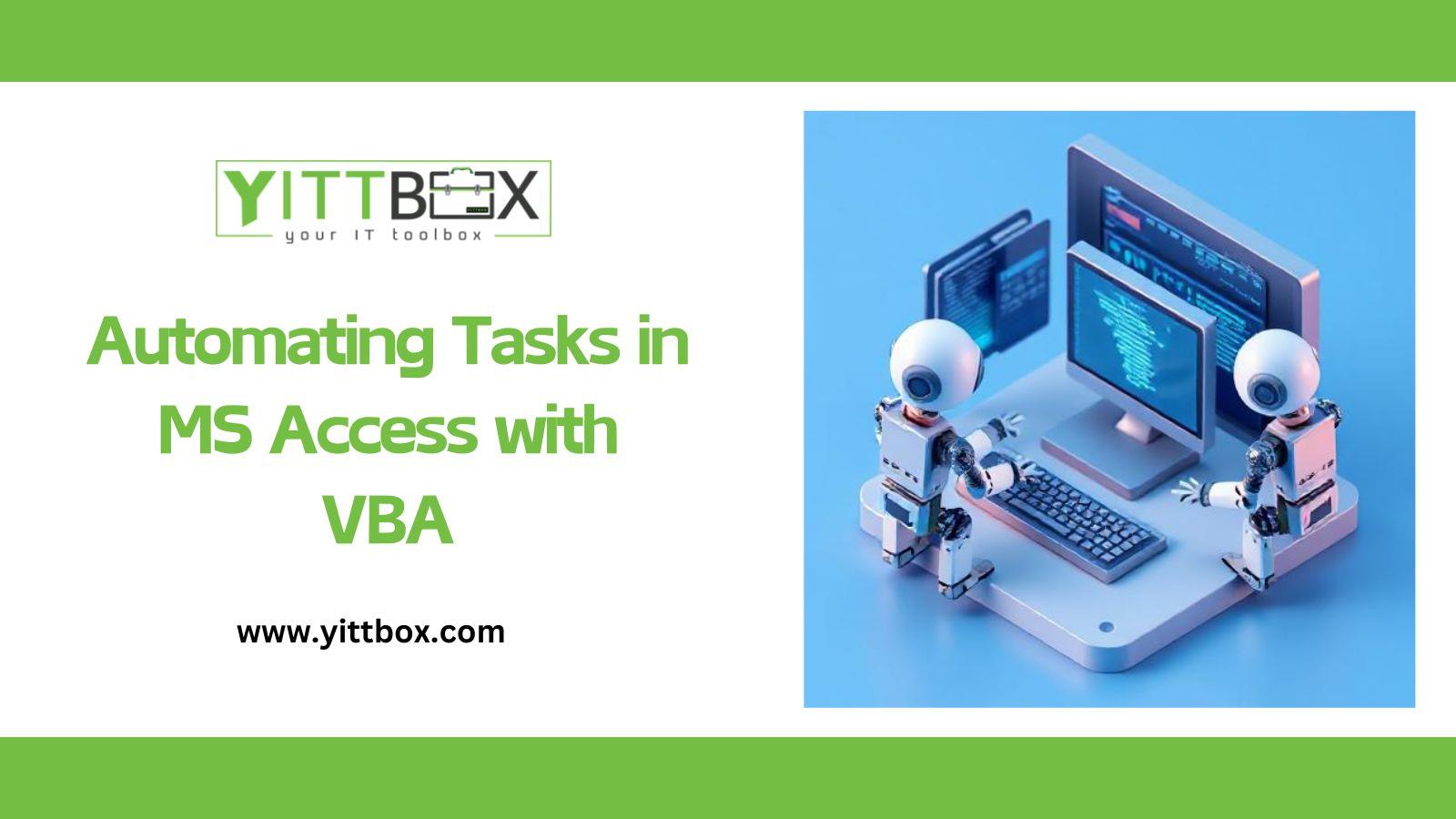Automating Tasks in MS Access with VBA
Microsoft Access is a powerful database management system widely used for organizing, storing, and analyzing data. However, manually handling repetitive tasks—such as data entry, report generation, and query execution—can be time-consuming and prone to errors.
This is where Visual Basic for Applications (VBA) comes in. VBA enables users to automate processes, optimize workflows, and significantly improve efficiency in MS Access. In this blog, we’ll explore how VBA can streamline tasks, reduce manual effort, and enhance database performance.
Understanding VBA in MS Access
VBA is a scripting language integrated into Microsoft Office applications, including MS Access. It allows users to automate repetitive data entry and processing, run complex queries with a single click, generate reports, improve user interaction with custom forms, and connect MS Access to external applications like Excel and Outlook. By leveraging VBA, businesses can minimize human intervention, reduce errors, and improve database efficiency.
Automating Data Entry to Reduce Errors
Manual data entry is a tedious and error-prone process. VBA can simplify this by automating input forms, validating data before submission, and reducing redundancy. For instance, VBA can auto-fill fields based on existing data. When entering an employee ID, it can automatically retrieve and display related details like name, department, and salary. This ensures accurate and consistent data entry while saving time.
Automating Report Generation and Exporting
Manually generating reports can be time-consuming, especially for large datasets. VBA enables automatic report creation, formatting, and exporting to Excel or PDF with a single click. With VBA, you can also schedule reports to be generated at specific times and automatically sent via email. This eliminates manual intervention and ensures timely report delivery.
Scheduling and Automating Queries
Running queries manually every time data needs to be processed can be inefficient. VBA allows users to schedule and automate queries, ensuring they run at specific intervals without user input. For example, VBA can execute a predefined query every time the database opens, ensuring that data is always updated in real-time without requiring manual execution.
Enhancing User Experience with Custom Buttons and Forms
A well-designed interface improves user experience, and VBA makes it easy to create custom buttons and forms for database navigation. A simple button click can trigger actions such as opening reports, running queries, or exporting data. This enhances usability and simplifies database interactions for non-technical users.
Integrating MS Access with Excel and Outlook
VBA allows seamless integration between MS Access and other Microsoft applications like Excel and Outlook to streamline business operations. For instance, you can automate the process of exporting MS Access reports to Excel for further analysis or set up email notifications that send reports to relevant stakeholders. This level of automation enhances productivity and ensures critical information is shared efficiently.
Key Benefits of Automating Tasks with VBA
Implementing VBA in MS Access offers several advantages:
✔ Time Efficiency – Eliminates repetitive manual tasks
✔ Accuracy & Consistency – Reduces human errors in data entry and reporting
✔ Improved Productivity – Allows users to focus on strategic tasks instead of routine operations
✔ Enhanced Reporting – Automates the generation and distribution of reports
✔ Seamless Integration – Connects Access with Excel, Outlook, and other applications
Conclusion: Future-Proofing MS Access with VBA
Automating repetitive tasks in MS Access using VBA can revolutionize database management, increasing efficiency, accuracy, and usability. By leveraging VBA, businesses can minimize manual work, improve data integrity, and streamline workflow processes. As automation continues to evolve, mastering VBA will be an essential skill for anyone working with MS Access. Now is the time to explore the full potential of VBA-driven automation and take your MS Access database to the next level.







